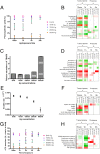Linking toxicity and adaptive responses across the transcriptome, proteome, and phenotype of Chlamydomonas reinhardtii exposed to silver
- PMID: 24550482
- PMCID: PMC3948315
- DOI: 10.1073/pnas.1319388111
Linking toxicity and adaptive responses across the transcriptome, proteome, and phenotype of Chlamydomonas reinhardtii exposed to silver
Abstract
Understanding mechanistic and cellular events underlying a toxicological outcome allows the prediction of impact of environmental stressors to organisms living in different habitats. A systems-based approach aids in characterizing molecular events, and thereby the cellular pathways that have been perturbed. However, mapping only adverse outcomes of a toxicant falls short of describing the stress or adaptive response that is mounted to maintain homeostasis on perturbations and may confer resistance to the toxic insult. Silver is a potential threat to aquatic organisms because of the increasing use of silver-based nanomaterials, which release free silver ions. The effects of silver were investigated at the transcriptome, proteome, and cellular levels of Chlamydomonas reinhardtii. The cells instigate a fast transcriptome and proteome response, including perturbations in copper transport system and detoxification mechanisms. Silver causes an initial toxic insult, which leads to a plummeting of ATP and photosynthesis and damage because of oxidative stress. In response, the cells mount a defense response to combat oxidative stress and to eliminate silver via efflux transporters. From the analysis of the perturbations of the cell's functions, we derived a detailed mechanistic understanding of temporal dynamics of toxicity and adaptive response pathways for C. reinhardtii exposed to silver.
Keywords: adaptive pathway; adverse outcome pathway; algae; systems biology; toxicity response.
Conflict of interest statement
The authors declare no conflict of interest.
Figures




References
-
- Ankley GT, et al. Adverse outcome pathways: A conceptual framework to support ecotoxicology research and risk assessment. Environ Toxicol Chem. 2010;29(3):730–741. - PubMed
-
- Jennings P. Stress response pathways, toxicity pathways and adverse outcome pathways. Arch Toxicol. 2013;87(1):13–14. - PubMed
-
- Purcell TW, Peters JJ. Sources of silver in the environment. Environ Toxicol Chem. 1998;17(4):539–546.
Publication types
MeSH terms
Substances
Associated data
- Actions
LinkOut - more resources
Full Text Sources
Other Literature Sources
Molecular Biology Databases

